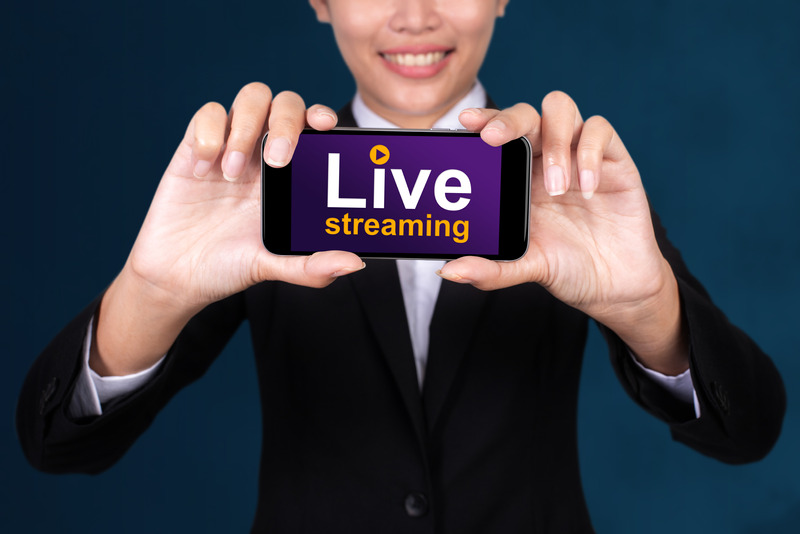In today’s digital age, live streams have become an essential tool for engaging audiences and expanding reach across various platforms. With the increasing demand for real-time interaction, individuals and businesses alike seek effective ways to harness this powerful medium to enhance their communication strategies. This article will explore the benefits of live streams, offering you practical tips and insights that can elevate your broadcasting experience. Stay tuned as we dive deeper into the world of live streaming and discover how to make your broadcasts more impactful!
Copyright free videos without watermark for YouTube at snapvideofun.online
Importance of Live Streaming for Audience Engagement
Live streams have emerged as a pivotal tool for engaging audiences in real time. The immediacy of live content allows brands and creators to form genuine connections with viewers, breaking down the barriers often present in pre-recorded content. As viewers crave authenticity and relatability, live streams present an unparalleled opportunity for interaction.
During live sessions, the audience can ask questions, share comments, and provide instantaneous feedback, fostering a sense of community. This dynamic interaction enhances viewer loyalty and encourages repeat participation. Brands can harness these opportunities to tailor content based on viewer preferences, making them feel heard and valued.
Moreover, the interactive nature of live streaming can boost participation metrics significantly. Engaging with an audience in real-time transforms traditional viewing into a collaborative experience, enriching both creator and audience dynamics. By prioritizing these engagements, brands can cultivate long-lasting relationships with their audience, driving future conversions and brand advocacy.
Adopting live streaming is not just a trend; it’s a necessary shift in how organizations communicate with their audiences. As we move into a digital-first era, embracing this format can set leaders apart, allowing them to resonate more deeply with their target demographics.

Key Platforms for Hosting Live Streams
The choice of platform can significantly influence the success of live streams. Each platform carries unique features, audience demographics, and engagement tools that cater to different needs. Major platforms like Facebook Live, Instagram Live, and YouTube Live offer user-friendly interfaces and widespread reach, making them ideal for creators just starting with live streaming.
For those looking to engage with a more niche audience, platforms such as Twitch excel in providing an interactive experience, particularly for gamers and eSports fans. This platform emphasizes community-building, allowing viewers to actively participate in the chat. In contrast, enterprises can benefit from professional platforms like Zoom or Microsoft Teams, which provide features suited for webinars, meetings, and more formal presentations.
Understanding where your target audience is most active is crucial. Different demographics favor different platforms, and leveraging the right one can enhance visibility and engagement. Evaluate the features and audience analytics of each platform to determine which aligns best with your brand goals. Choosing wisely not only boosts engagement but also ensures that your live streams reach the intended audience effectively.

Tips for Creating Interactive Live Stream Content
Crafting engaging content for live streams requires strategic planning. Begin by knowing your audience and tailoring content to meet their interests. Encouraging audience participation is key; integrate polls, quizzes, and Q&A segments to invite viewers to interact actively. This involvement keeps viewers invested and lets them feel a part of the session.
Timing is also essential. Schedule streams when your audience is most available and promote these sessions in advance through social media and email newsletters. This creates anticipation and increases the likelihood of attendance. Additionally, incorporating storytelling elements can make your content relatable and memorable, captivating the audience throughout the broadcast.
Remember the importance of visuals; engaging graphics, on-screen questions, and dynamic backgrounds enhance the viewing experience. Moreover, having a clear call-to-action can guide viewers on what to do next – whether it’s subscribing, sharing, or joining a mailing list. By embracing these techniques, you elevate the experience for your audience, transforming your live streams into must-see events.

Best Practices for Promoting Your Live Streams
Promotion is paramount to maximize attendance for your live streams. Start by creating a marketing calendar that outlines when and where you’ll promote each stream. Utilizing multiple channels, such as social media platforms, email newsletters, and your website, will help reach a broader audience. Tailor your messages to fit the unique style and audience of each channel for better engagement.
Engagement should start before the stream goes live. Use teaser clips, countdown posts, or behind-the-scenes content to build excitement. Collaborating with influencers or popular figures within your niche can also expand your reach, as they carry their audience with them.
On the day of the event, remind your audience about the stream via posts, stories, and direct notifications. Engaging with your audience in the moments leading up to your live broadcast can enhance their anticipation, and live-streaming platforms often have in-built promotional tools that can help notify followers directly. Using these practices, you ensure your live streams not only gain traction but are attended by an engaged audience.

Analyzing Viewer Engagement and Feedback
After a live stream, analyzing viewer engagement can provide invaluable insights. Use analytics tools provided by your streaming platform to track viewer metrics such as peak viewership, average watch time, and interaction rates. These insights can help understand what content resonates most with your audience.
Engaging with feedback received during and after the stream is equally essential. Pay attention to live comments, and follow up through post-stream surveys to gather additional insights. This two-way communication not only enhances viewer trust but also aids you in improving future content.
Furthermore, identifying trends in viewer behavior across multiple streams can help refine your approach. If a particular type of content or format consistently attracts more engagement, consider focusing on that trend. By diligently analyzing and adapting to viewer preferences, you position your content for ongoing success and foster a loyal audience base.
Case Studies: Successful Live Stream Campaigns
Looking at successful live streams reveals best practices worth noting. For instance, a major brand successfully leveraged live cooking sessions featuring celebrity chefs, blending entertainment with product promotion. This interactive platform not only showcased their products but engaged audiences through live questions and challenges.
Another notable example includes a non-profit organization that hosted a live fundraising campaign. By inviting guests to share stories and interact with the audience, they created a sense of urgency and connection, leading to record donations. These instances illustrate the importance of creating compelling narratives while encouraging audience involvement.
Examining these campaigns emphasizes that success in live streaming involves clear objectives, preparation, and a commitment to engaging your audience. Learning from these examples provides a blueprint for crafting effective live strategies tailored to any brand or project.

Future Trends in Live Streaming and Audience Interaction
The future of live streaming holds promising trends that will shape how audiences interact with content. The rise of augmented reality (AR) and virtual reality (VR) will likely enhance live experiences, allowing users to engage in a more immersive manner. Imagine hosting a live Q&A where viewers feel as if they are sitting right next to the speaker.
Moreover, the growing importance of user-generated content can influence the direction of live streams. More brands may invite their audience to co-create content during live sessions, further enhancing interaction. Additionally, as technology evolves, we might see AI integration to personalize viewer experiences, tailoring content in real-time based on responses.
As more audiences express their desire for authentic experiences, staying ahead of these trends is instrumental for content creators. By anticipating audience preferences and adapting to technological advancements, brands can ensure their live streams remain relevant and engaging in an ever-evolving digital landscape.
- Engaging Product Demo Videos to Boost Sales Effectively
- Exploring the World of Podcast Videos for Creators
- How Promotional Videos Can Boost Your Business Success
- Discover the Fun of Meme Videos Today
- Impact of Testimonial Videos on Customer Trust
In conclusion, live streaming has emerged as an essential tool for fostering real-time engagement and building authentic connections with audiences. By prioritizing interactivity and personalization, brands can create memorable experiences that not only boost viewer loyalty but also drive future conversions. As you explore the benefits and strategies discussed, consider embracing live streaming as a dynamic way to connect with your audience. Don’t hesitate to implement these insights into your next campaign, and feel free to reach out for further guidance or to share your successes!

ARTICLES IN THE SAME CATEGORY
Understanding How Much It Costs to Start a Podcast
Download Free Raw Podcast Clips for Editing
Do Podcasters Make Money and How to Increase Earnings
Explore the Excitement of Challenge Videos Today
Discover the Best YouTube Podcasts on Spotify
How a Beginner Starts a Podcast Effectively
How to Start a Podcast Script Effectively and Creatively
How to Setup Live Stream on YouTube Easily